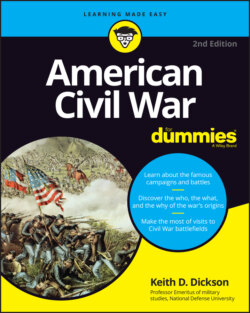Читать книгу American Civil War For Dummies - Keith D. Dickson - Страница 115
Strength and size of units
ОглавлениеThe official numbers are good to get an idea of structure and organization, but in reality, Civil War armies had wide variances in unit strength. Sickness, desertions, battle deaths, wounds, and furloughs (time off from military duty, usually to go home) took their inevitable toll. Regiments often were 500 men or below. By 1863, some veteran regiments in both armies were down to 200 men or fewer. The reason for this lies in the method by which regiments were initially recruited and organized. Volunteers filled the initial ranks of new regiments. After several months of combat, the original (and now understrength) volunteer regiments were rarely brought back up to original strength with other volunteers; instead, entirely new regiments of recruits or conscripts (individuals enrolled in the army by compulsion through law) would be added to the army. This was especially true for Union units. Needless to say, this caused tremendous organizational and administrative headaches for a division or corps commander. This situation also caused problems on the battlefield. Veteran units had to be assigned to divisions composed of mostly untested recruits. This practice kept the overall fighting quality of the Union army uneven. After the institution of conscription (compulsory military service), replacements for both Union and Confederate armies were brought into existing units to bring them up to nominal strength. As the war went on, brigades filled out their strength by adding a number of understrength but very combat-capable regiments. Near the end of the war a brigade contained anywhere from five to six regiments.
